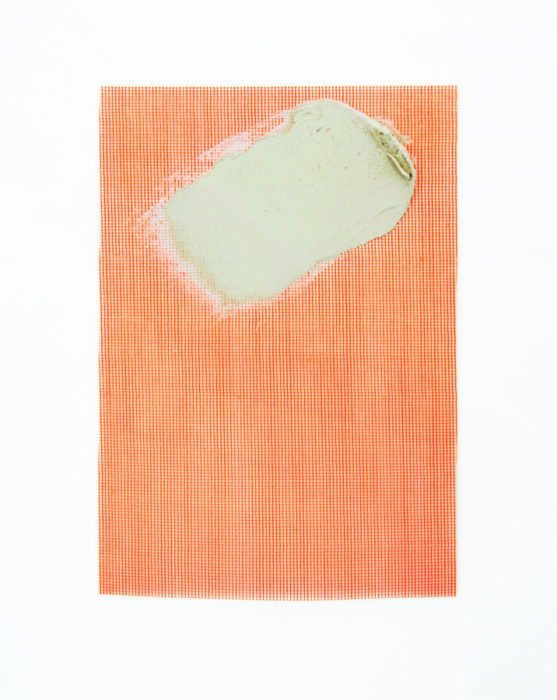The two-part group show explores the aesthetics of sculptural painting, spatial installations, artistic apparatuses, and performative actions constructed with recognizable recourse to hardware store supplies, the simplest components, converted low tech, and reductionist methodology. Prefabricated, cheap to rugged materials and modes of construction remain superficially intact; their properties, material as well as aesthetic qualities are questioned.
For his series of works “Impact” FELIX KIESSLING (*1980 Hamburg) deforms aluminum and steel plates or discarded fire doors into sculptures. As a result of a simulated meteorite collision, an entropic negative imprint remains in them, representing the momentariness and the force of the impaction of a concrete body weighing tons, makes physical phenomena and cosmic connections visible.
Using simple, everyday materials, SCHIRIN KRETSCHMANN (*1980 in Karlsruhe) reacts in an installative way to architecture and spaces of interaction. Her mutable works combine painterly, sculptural and synesthetic qualities. Minimalist settlements of ephemeral color surfaces are sifted onto the floor. Pigments bound in ice cream or leather grease extend themselves processually into space – they are subject to changes in materiality and consistency, leaving sometimes massive traces on exhibition walls or floors. Actions of the surrounding setting remain stored in surface injuries.
In the “Paintings” by KRIZ OLBRICHT (*1986 in Freiburg im Breisgau), solid and fluid building materials become paint. Rough, industrially produced materials such as plasterboard, aluminum profiles or reinforcing fabric are combined into objects that take painting as their point of departure. Colored silicone is pressed to pasty lines, and a gestural application of adhesive plaster fixes fiberglass mesh directly to the wall. A balancing of formal proximity and difference is reflected in his spatial minimalist interactions as settlements of visually and materially divergent disruptive elements.
The exhibition is funded by
Stiftung Kunstfonds
NEUSTART KULTUR-Programm
Ministerium für Bildung, Wissenschaft und Kunst, Mecklenburg-Vorpommern


The two-part group show explores the aesthetics of sculptural painting, spatial installations, artistic apparatuses, and performative actions constructed with recognizable recourse to hardware store supplies, the simplest components, converted low tech, and reductionist methodology. Prefabricated, cheap to rugged materials and modes of construction remain superficially intact; their properties, material as well as aesthetic qualities are questioned.
For his series of works “Impact” FELIX KIESSLING (*1980 Hamburg) deforms aluminum and steel plates or discarded fire doors into sculptures. As a result of a simulated meteorite collision, an entropic negative imprint remains in them, representing the momentariness and the force of the impaction of a concrete body weighing tons, makes physical phenomena and cosmic connections visible.
Using simple, everyday materials, SCHIRIN KRETSCHMANN (*1980 in Karlsruhe) reacts in an installative way to architecture and spaces of interaction. Her mutable works combine painterly, sculptural and synesthetic qualities. Minimalist settlements of ephemeral color surfaces are sifted onto the floor. Pigments bound in ice cream or leather grease extend themselves processually into space – they are subject to changes in materiality and consistency, leaving sometimes massive traces on exhibition walls or floors. Actions of the surrounding setting remain stored in surface injuries.
In the “Paintings” by KRIZ OLBRICHT (*1986 in Freiburg im Breisgau), solid and fluid building materials become paint. Rough, industrially produced materials such as plasterboard, aluminum profiles or reinforcing fabric are combined into objects that take painting as their point of departure. Colored silicone is pressed to pasty lines, and a gestural application of adhesive plaster fixes fiberglass mesh directly to the wall. A balancing of formal proximity and difference is reflected in his spatial minimalist interactions as settlements of visually and materially divergent disruptive elements.
The exhibition is funded by
Stiftung Kunstfonds
NEUSTART KULTUR-Programm
Ministerium für Bildung, Wissenschaft und Kunst, Mecklenburg-Vorpommern